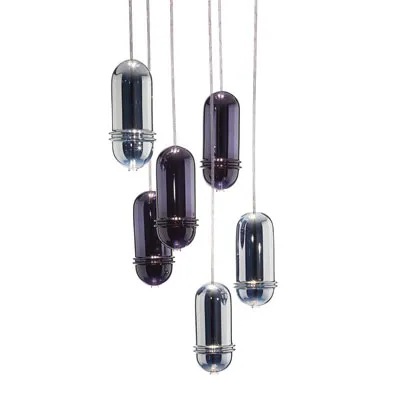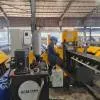Photo courtesy: Carrier Corporation
Of India’s Rs 220-billion annual air-conditioning (AC) market, Rs 150 billion worth of components are imported. That’s 68 per cent!
Essentially, “about 30 per cent of AC parts are directly imported, and of the 70 per cent that are made in India, about half necessitate imported components,” explains Gurmeet Singh, Chairman & Managing Director, Johnson Controls-Hitachi Air Conditioning India Ltd, and President, Refrigeration and AC Manufacturers Association (RAMA).
To curb these imports, mainly from China and Thailand, and ensure more value and jobs are created in India, the Central Government is finalising a phased manufacturing programme (PMP).
Chirag Baijal, Managing Director, Commercial HVAC, India Region, Carrier Corporation, hails this move as a step in the right direction—“Because the import content in an AC system is currently significant, localisation will protect original equipment manufacturers [OEMs] from costs like import duties and levies, and currency fluctuations.”
“Importing components increases the inventory you have to carry, warehousing cost, and many other costs associated with time lags in parts reaching production centres,” explains Vishal Kapur, Chair, ISHRAE’s Technical Committee, and Managing Director, Meho-HCP Air Systems.
End-to-end manufacturing
To derive both effectiveness and efficiency out of the PMP, Baijal emphasises that “the focus should be on setting up a complete parts ecosystem that can help the HVAC industry as a whole.”
So while compressors may be most talked about for being a high-ticket component—a compressor makes up over 60 per cent of the cost of an AC—and for mostly being imported (more than 75 per cent are), other parts and subparts must be covered too.
“Beyond compressors, the initiative should impact the production of printed circuit boards and other electronic parts, fittings and accessories,” opines Kapur.
It appears that the Government is thinking extensively on the matter. Import duties on key AC parts are proposed to be hiked over the next five years. Duties on fully finished indoor and outdoor AC units are expected to be increased from 20 per cent to 30 per cent; duties on circuit board controllers, motors, cross-flow fans and evaporators, and metal and plastic parts from 10 per cent to 20 per cent’ and duties on compressors from 12.5 per cent to 20 per cent (the last in the next four years).
These are components of all kinds of ACs; “window units, split units, variable refrigerant flow, chiller plants, etc,” observes Kapur.
However, it isn’t enough just to revise duties. “Investments could be made in the manufacturing of compressors, drives and other electronic parts, all subject to viability, as part of this programme,” says Baijal.
The key word is viability.
Scaling up
A cycle of demand and supply is at play in the AC market. “Localisation would make ACs more affordable and this could lead to an uptick in demand,” Baijal points out. But localisation is heavily dependent on scale.
“Foreign suppliers work out of export-oriented units supplying to a wide section of industry players in different countries,” Baijal explains. “This gives them the scale to operate, which is important from the perspective of viability and unit economics.”
With an AC penetration of around 5-6 per cent (as per Kapur) and 10 per cent in cities (as per Baijal) as against 30 per cent globally, India today lacks scale.
How might that change?
“A huge opportunity will emerge with a rise in disposable incomes in urban and rural centres,” says Baijal. Indeed, “air-conditioning is no longer a luxury but becoming a necessity as well as moving into smaller cities and towns,” observes Kapur.
Other demand drivers include ACs becoming more energy-efficient and the availability of better quality and less expensive power supply in the country.
On the supply side, incentives would help drive growth.
“If the Government intends to attract investment from global suppliers, it might need to look at attractive incentivisation schemes,” observes Baijal. “If the supplier base is to be developed in India, government support to MSME suppliers would be essential for them to be competitive.”
The positives are that “at the present time, the industry has the will to consolidate making in India and the Government has a strong resolve to facilitate this process,” says Singh.
“Compressor-maker Highly (current annual capacity of 2 million compressors) and another company with plans to start making compressors have said that if the basic customs duty is increased as the industry has suggested, they would be interested in ramping up operations in a year.”
Another aspect is that about 80 per cent of the market, worth $ 2.6 billion, comprises room ACs, that is window or split type, says Singh. “A focused effort on room ACs would help indigenise 80 per cent of the market.”
Countdown to full localisation
Localisation is a gradual process because “it isn’t as though only the middle or end part will be indigenised; you need access to all the raw material that goes into the supply chain,” explains Kapur. “Over six months to a year or more, the level of localisation will gradually increase from the current levels of 40-60 per cent.”
When the industry first embarks on the PMP, Kapur believes we may see a cost escalation. Only in the long term when localisation increases to near 100 per cent—and the economies of scale kick in for all AC components—does Kapur estimate a 5-10 per cent reduction in pricing. Now that’s a cool thought!
Impact of COVID-19 on AC demand and supply
“Demand for indoor air quality (IAQ) solutions has grown significantly and companies are coming up with enhanced solutions,” says Kishor Patil, Country Leader, Trane Technologies. “Customers are looking for cost-effective solutions with improved design and quality, irrespective of where they are sourced.”
“As commercial spaces reopen after the lockdown, organisations need to be proactive and take stronger measures to ensure the safety of their workforce and their families,” explains
Pradeep Bakshi, Managing Director & CEO, Voltas. “Technologically improvising existing central HVAC systems by introducing ultraviolet [UV] germicidal irradiation can help curb the
spread of COVID-19 in offices, malls, etc. In line with this, Voltas offers UV-powered solutions for duct, air and surface disinfection to compliment the immediate and long-term need for safety.”



















